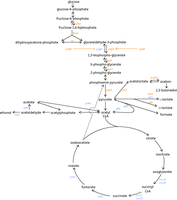Killer Bee Attack Saves a Woman’s Life and Inspires Amazing
Product
WASHINGTON TIMES, November 23, 2013—What do Lyme disease,
bees, and face cream have in common? This is the remarkable story of Ellie
Lobel, how a killer bee attack cured her Lyme disease, saved her life and
inspired the first U.S.-made bee venom beauty cream…
Ellie Lobel was one of the disease’s chronic victims, as she
was initially misdiagnosed several times with lupus, MS, chronic fatigue, and
fibromyalgia. The multiple misdiagnoses allowed the Lyme bacteria time to
spread through her body.
Suffering from multiple organ failure, low cell counts, and
doctors telling her they had done all they could for her, after 15 years Lobel
moved to California for end of life care.
“I was ready to go,” Lobel says. “I was able to see my
children into young adulthood and had made my peace with life.”
But life had other plans for Lobel.
During her first week in California, Lobel and her caretaker
were attacked by killer bees while on a short walk. This terrified Lobel, as
she had been stung once as a child and had a severe allergic reaction
(anaphylaxis).
Her caretaker was forced to run and look for help, but Lobel
was too weak to run or even walk away from the thousands of stinging insects.
“The pain was excruciating,” she told Communities. “I was
terrified.”
The bees finally stopped when Lobel, accepting her fate,
held her body completely still. “I thought I was going to die right there,” she
said.
Blinded by pain, Lobel asked not to be taken to the
hospital. She knew she was going to die and did not want to do it in an
unfamiliar place. She was helped back to her room and quietly waited
anaphylaxis—the body’s reaction to a large doses of bee venom—to take her life.
Instead of anaphylaxis, however, within a few hours of the
attack she began to feel a familiar pain. Lobel was sure she was feeling the
same pain associated with Lyme disease treatment, known as a Jarisch-Herxheimer
reaction, that occurs when harmful bacteria inside the body die off and release
endotoxins.
By the beginning of the third night, Lobel was sure she
wasn’t going to die. In fact, she was doing things the disease had prevented
her from doing for many years.
“For the first time in years I was online, laughing and
watching funny videos,” she says. “By the next day, I could actually remember
the words to an old song I’d heard the night before, something that I hadn’t
been able to do for so long.”
In the days following the attack, Lobel began to feel
significantly better. After living in a “mental fog” for years, where she could
not concentrate, read a book, watch a movie, or even have a detailed
conversation, Lobel began to regain her previously brilliant mind. Her mental
changes were mirrored by a marked improvement in her physical health.
Two years after the attack, Lobel feels completely healthy.
She believes that she is currently free of the disease that almost took her
life two years ago…


























